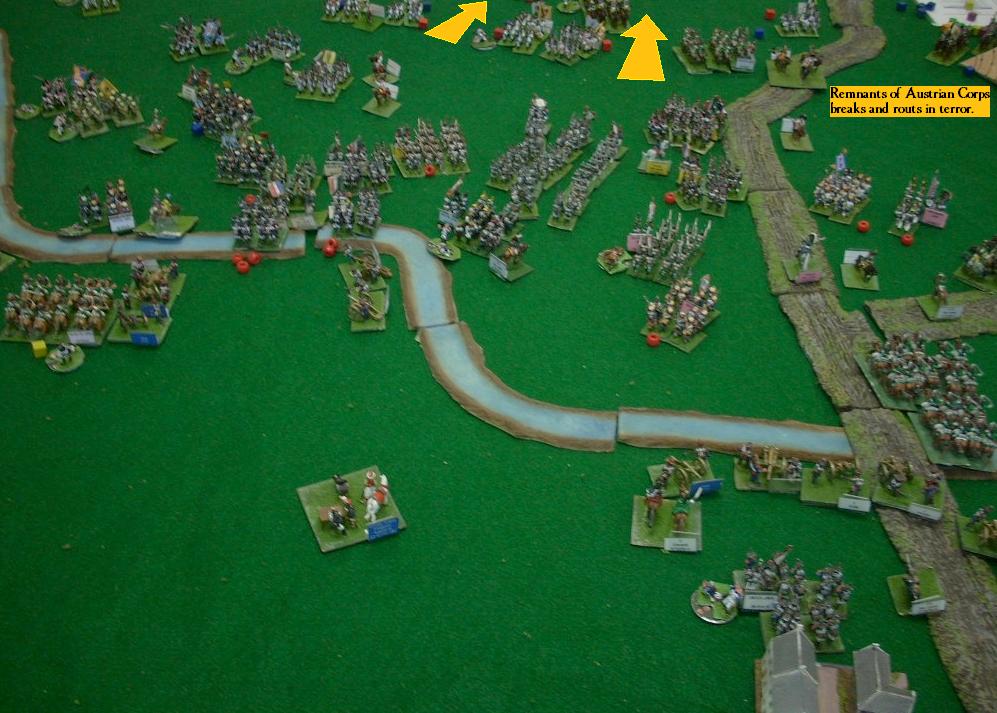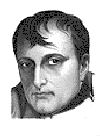
Emperor Napoleon
La Grand Armee
62,400 inf
7,040 cavalry
78 artillery
BATTLE OF HERRSCHING
APRIL 10, 1810

General Czarak (under Schwarzenberg)
VII Korps
40,800 Austrian infantry
3,520 Austrian cavalry
24 artillery
|
62,400 inf |
BATTLE OF HERRSCHING APRIL 10, 1810 |
General Czarak (under Schwarzenberg) 40,800 Austrian infantry |
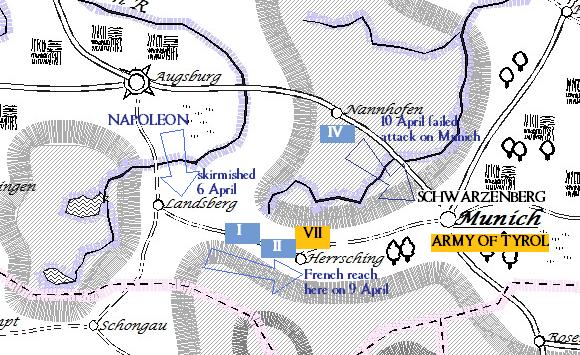
April 1810, and Napoleon is advancing to recapture Bavaria in three wings. General Schwarzenberg, with his Army of the Tyrol, wait at Munich for the French attack.
Located some 16 miles southwest of Munich, Herrsching is on a minor road that General Czarak is holding with his Austrian VII Corps. Two days before, three of his divisions had fought a limited engagement with French forces of Soult's II Corps at Landsberg where the French had forced a crossing of the River Lech. General Soult is advancing east from Landsberg with an initial force of only 18,720 French infantry, 11,040 Bad infantry, 7,040 cavalry, and 24 artillery.
A good portion of Soult's command is fatigued while the Austrians have had a day to rest and take advantage of their well-stocked supply train. The French advance has had an alarming rapidity.
General Czarak, having infantry superiority but cavalry inferiority, deploys in a conservative, stable position behind the Amper stream. The waterway would prove to be an insufficient barrier to the French. Czarak's orders were to hold the French as long as possible.
Initially, Marshal Soult was in command of his own II Corps as well as two divisions of I Corps. He would deploy with the II Corps on the left and the I Corps on the Right.
The battle would commence with an advance of the French at 1000 hrs.
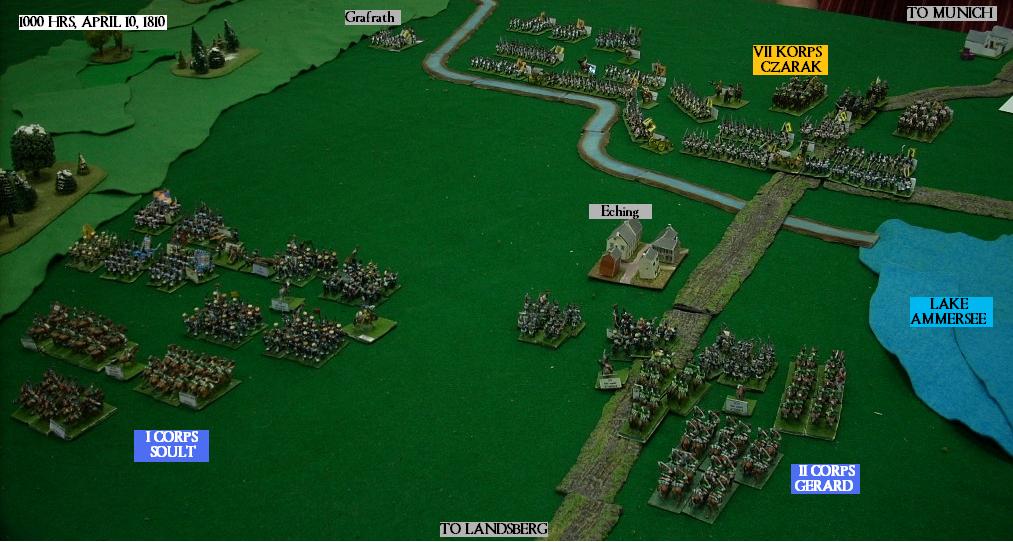
Initially, General Czarak is confident of his deployment.
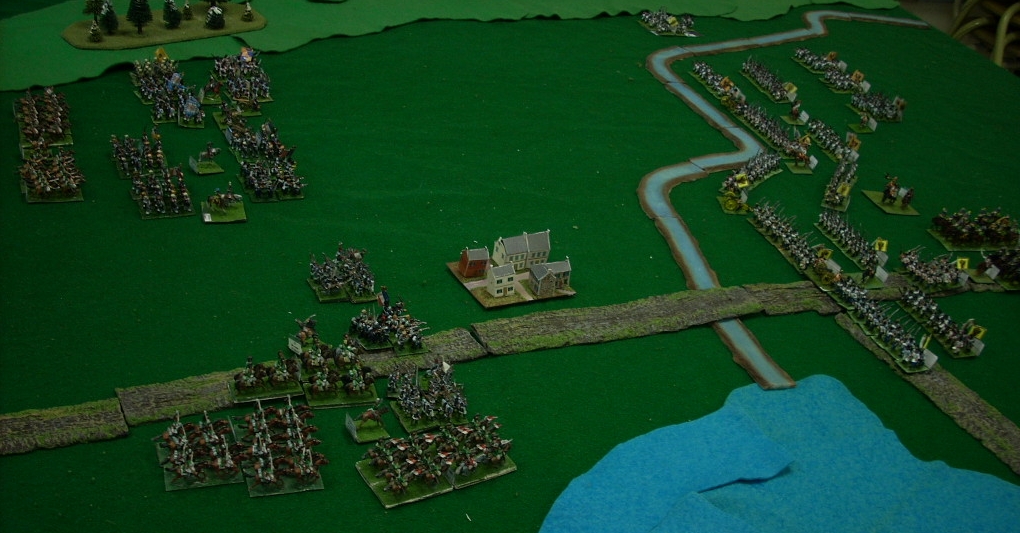
By 1100 hours, the situation has already begun to deteriorate for the Austrians. French reinforcements have begun to arrive including the French Emperor. It becomes quickly apparent that this is not a single Corps that Czarak is facing but two full Corps and Napoleon himself. The French have the initiative.
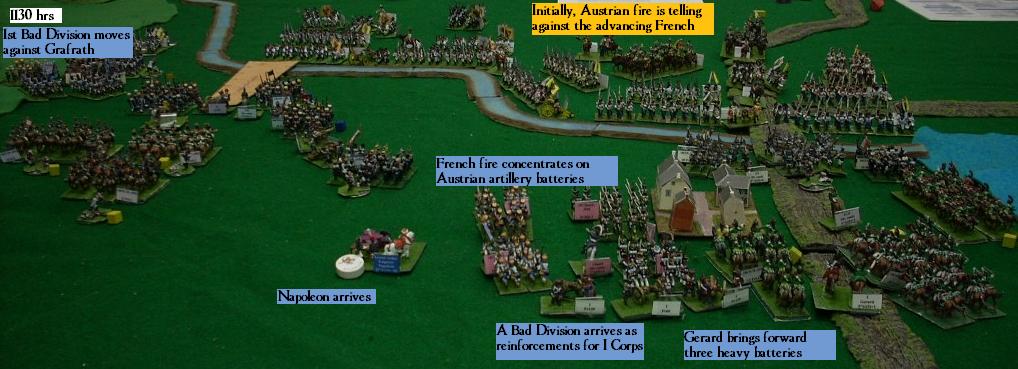
By 1200 hrs, it is become clear to the Austrian commander that the concentration of fire that the attackers can bring against his lines cannot be endured. Initially, the French concentrate their fire on Austrian artilelry.
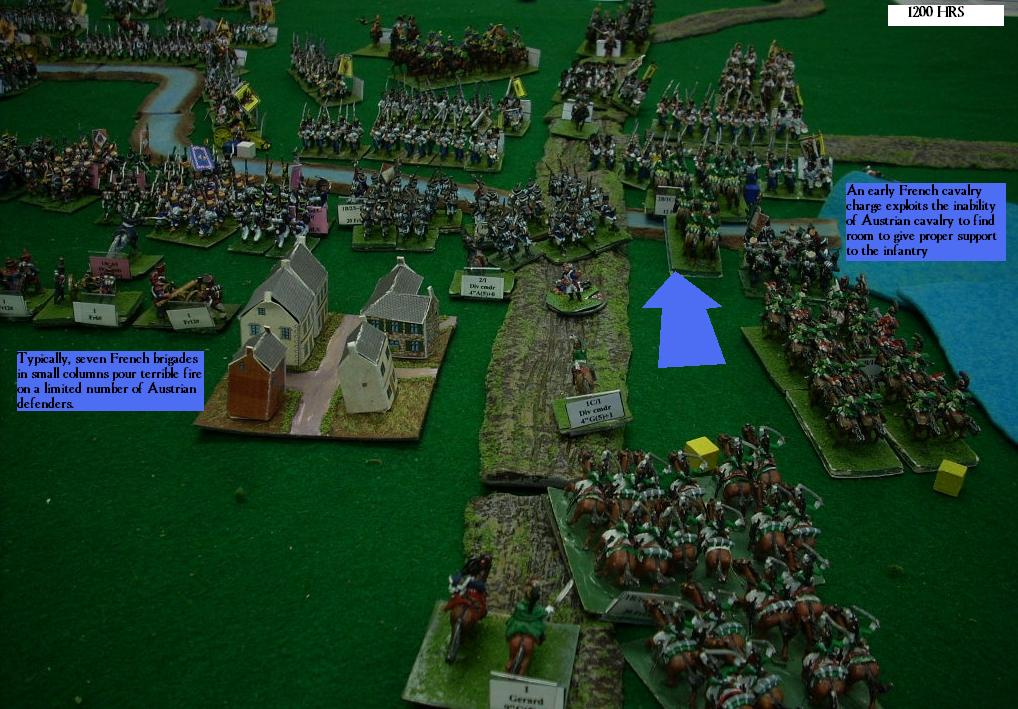
By 1230 hours, the Austrian artillery has been silenced and the French have achieved absolute artillery supremacy.
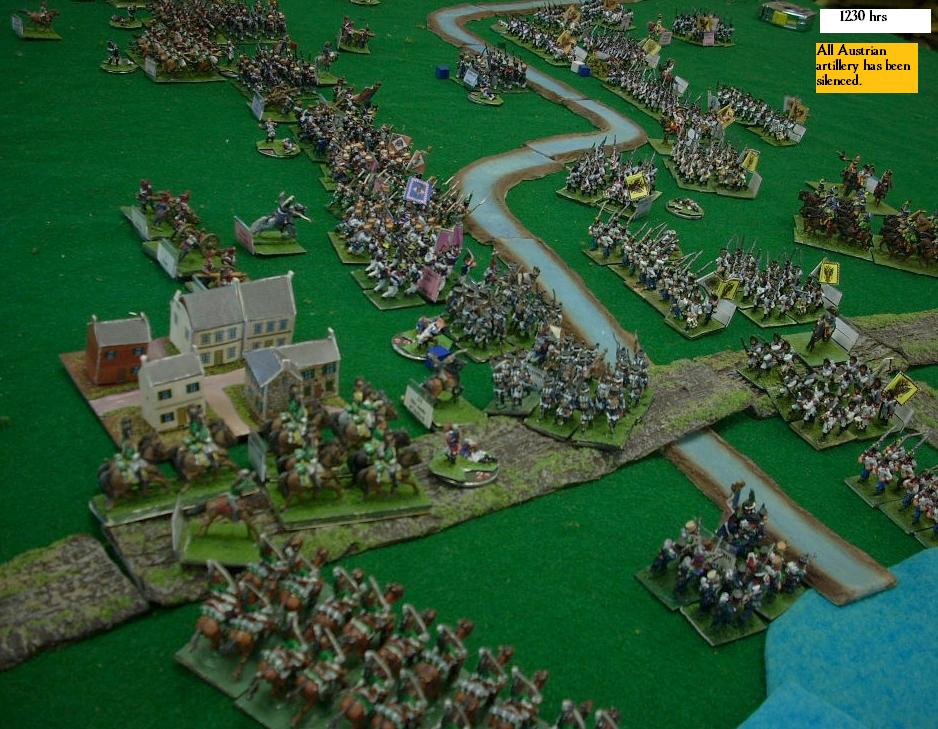
To make matters worse, six more French artillery batteries are now arriving bringing the French total to twelve. The guns, in conjunction with lethal musketry, is taking a terrific toll on the defenders who have now switched into columns to minimize their frontages. They gain little manoeuvrability by this though as their front line is being perpetually disordered.
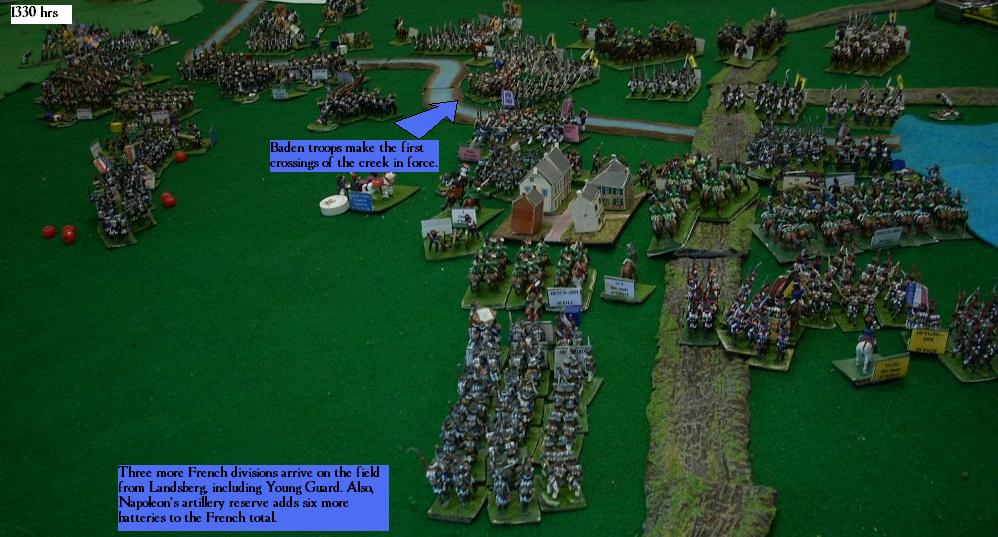
A Baden division has marched from landsberg and directly into the fighting. They are the first to storm across the stream in strength and the Austrians would be unable to dislodge them.
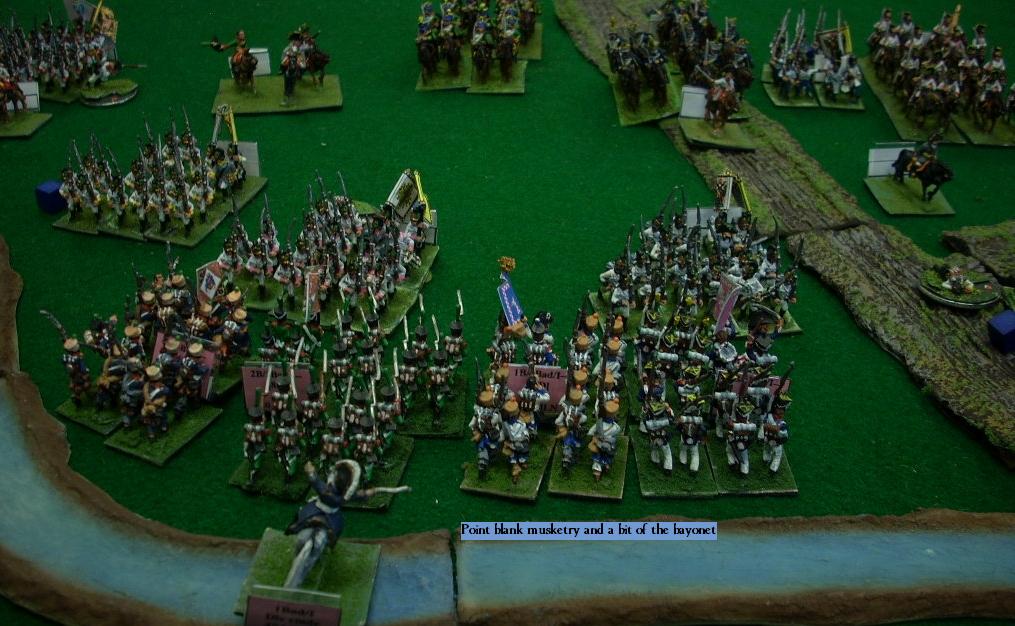
Six hours into the battle and the Austrian line still holds, at high cost. Five Bad brigades have nearly surrounded Grafrach village and prepare to assault it.
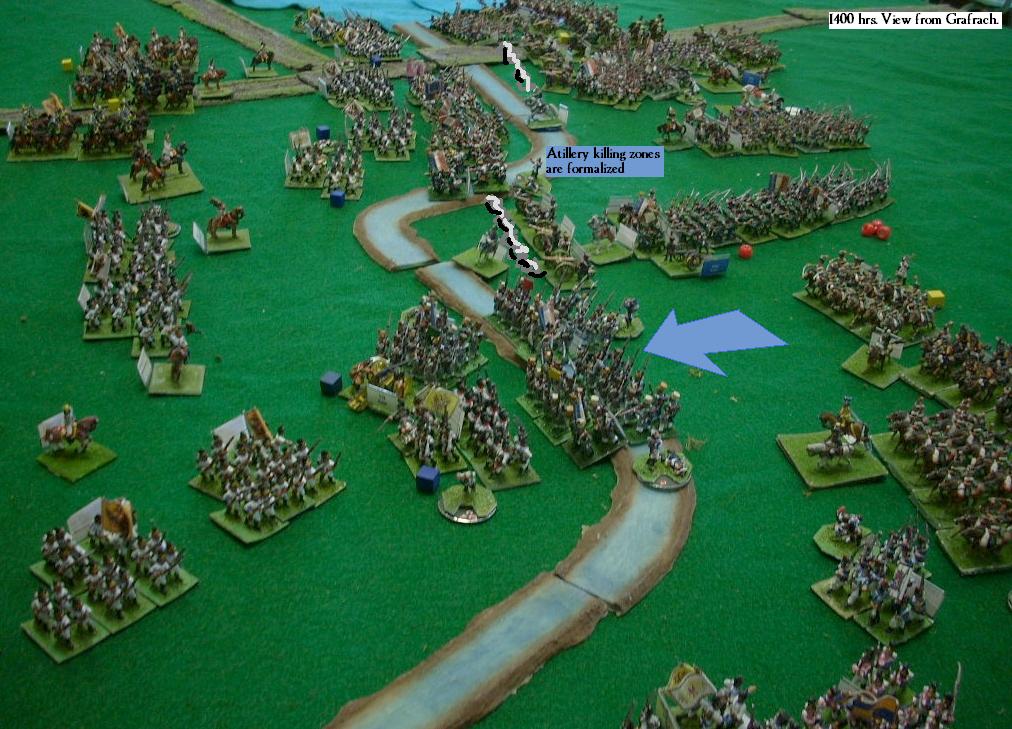
French artillery sweeps the field with violence.
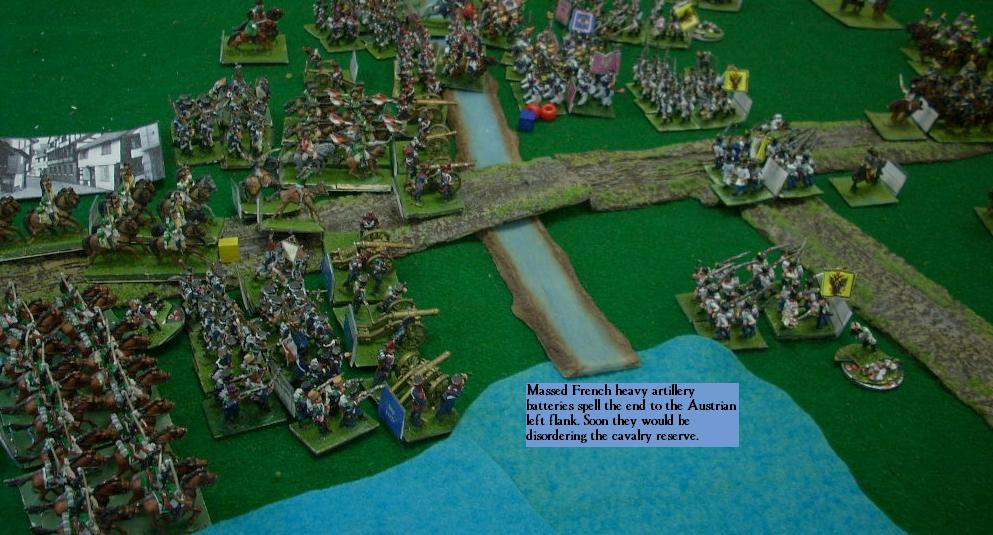
By this time, the initiative has switched hands twice. The French surrendered it once for a temporary turn sequence shift and then the Austrians turned it in at the next opportunity to prevent a French double turn.
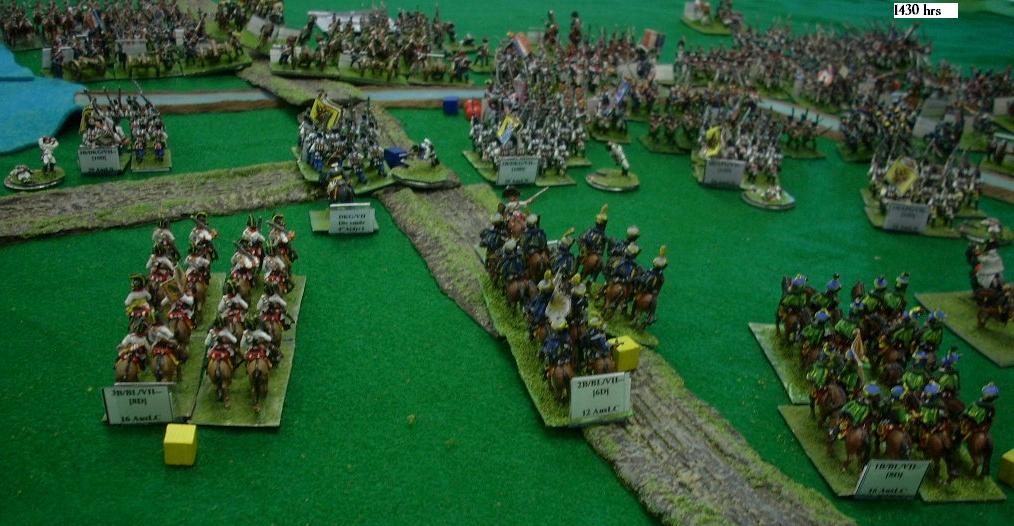
Grafrath fell to a Baden assault and the energetic Germans swarm forward on the Austrian right flank.
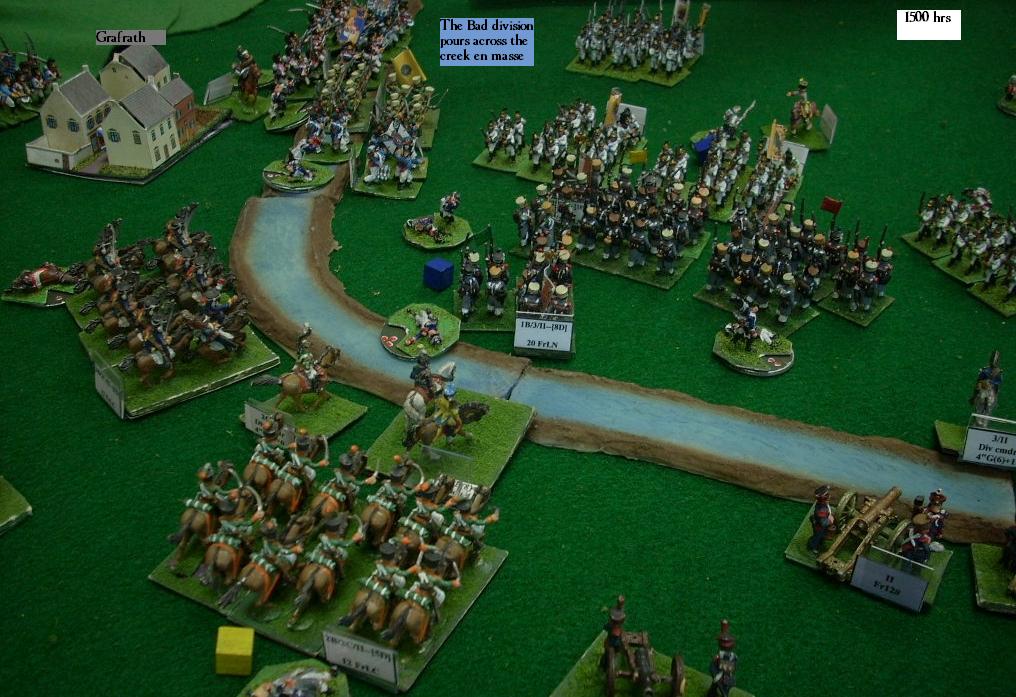
Napoleon turns in the initiative marker once more for a temporary turn sequence change and uses the double turn to conduct a general advance that would sweep the last of the Austrian VII Corps from the battlefield. Four Generals would be overrun in the advance, including Czarak, but none would suffer serious harm.
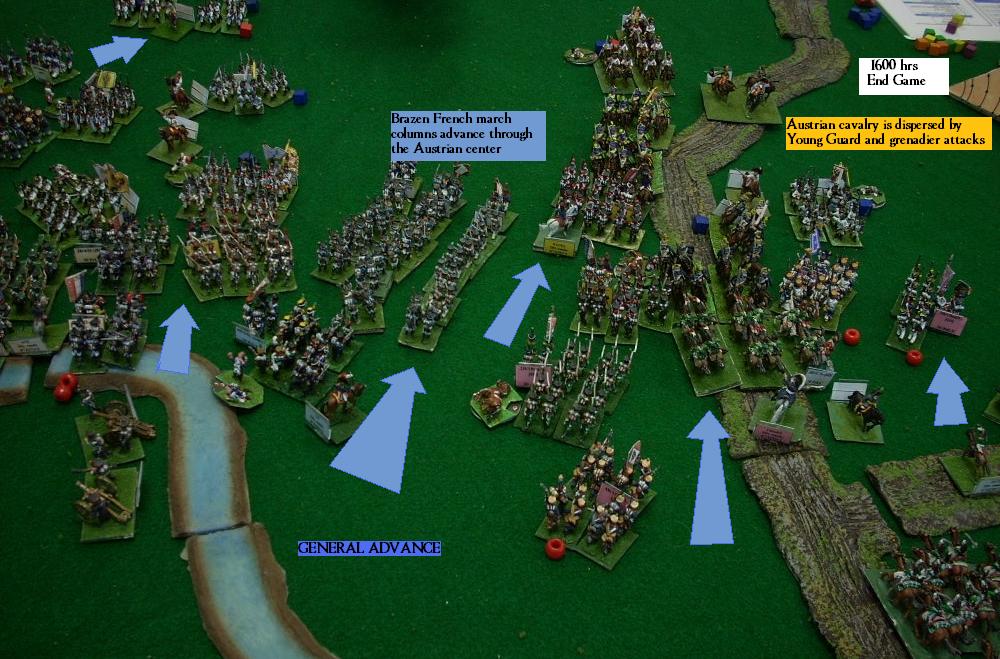
The Austrian VII Corps routs from the field and streams toward Munich. French I Corps is pursuing on their heels.
